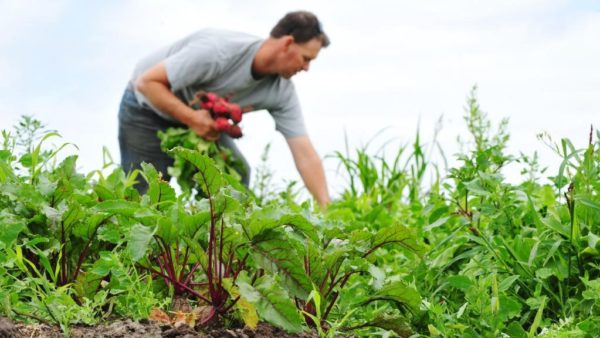How to make a profit on a small acreage farm

ROB PELLETIER, The Weekly Times June 12, 2016 7:00am WELCOME to a tour of my money pit. Last updated 12-22-2019
Highlights include extensive yards, laneways and fencing, at least the bits the kangaroos have left standing; empty dams ready for whatever the weather gods throw at us; a shed packed full of whatever seemed like a good idea at the time; paddocks where there used to be grass before the kangaroos ate it all and many hectares of attractive, highly flammable bushland.
Just about everything we have here is tax deductible, the tools, equipment, hardware and tractors. Even the ride-on mower. That’s one of the positives of farming.
There’s only one thing missing from the picture. Profit.
Tax deductions are not much use unless they can be offset against some regular income. And while expenditure is difficult to curtail, incoming cash flow is hard to start and is likely to stop at the drop of a hat.
Like many farmers before us, we learned early in this farming caper that expenditure happens more easily than income.
So, how can a small acreage farmer make a genuine profit?
BIG ASPIRATIONS
First it’s best to understand what divides big and small farming models.
While commercial farmers have difficult years, often several in a row, and some do go broke, most survive. In the good years, many generate large profits and smart operators plan for the leaner years.
For small farm operations, there is less room to maneuver. The problem is lack of scale and something called commoditization.
Commoditization is when goods from different producers are lumped together and sold as simple commodities. It results in less differentiation from a buyer’s perspective.
The key to success as a small-scale producer is to find and exploit the differences between large and small farming, rather than try to mimic a highly commercial farm.
TIPPING THE SCALES
Commercial farmers take advantage of economies of scale. Once production reaches a sustainable level, it is possible to increase output with little additional costs.
For example, once a producer with substantial land makes enough hay to comfortably pay for a decent tractor and baler, he can easily increase output by working longer hours or hiring a casual employee. Additional profit rolls in with the same equipment and land area.
For the land owner hoping to produce organic hay on just a few acres, the odds are stacked against him from the start. Even with reliable equipment, no economies of scale are available because of lack of land.
MARCH OF TIME
At the start of the 20th century things were different. Farms were smaller, more diversified and sold produce locally. Food was more expensive and a higher proportion of sale prices went to farmers.
Today, farms are bigger. Many agriculture products have been commoditized, meaning produce of the same type is grouped and sold together. While one farmer might grow exemplary wheat, once his grain goes to a co-operative local silo, it becomes just plain old wheat. Most produce is sold through national or global markets.
The benefits of this approach include low selling costs and, even in a bad year, the combined outputs ensure a critical mass to sustain markets.
But, a drawback is farmers have become price-takers with less control over prices they receive. Thus, a bumper season in another country can depress prices in Australia.
RAISE PRICES
Competing on price is difficult for small farmers. To have the lowest prices you need the lowest costs, and that is rarely possible for small operations.
Small farms are well placed, however, to offer value through food provenance, something increasingly absent on supermarket shelves. Commoditization has meant the loss of some foods’ regional identity. And, a growing perception that homogenous supermarket fare has also lost its flavor, freshness and variety.
Small operators are able to set prices to reflect the individual character and provenance of their food.
DIRECT MARKETING
At farmers’ markets, producers can communicate directly to consumers. In only a decade or so, farmers’ markets have captured a small, but significant and growing segment of the food market.
Market stallholders receive the full retail price, rather than losing a proportion to wholesalers or retailers. Prices at farmers’ markets can reflect the higher cost of producing small quantities, and returns are better than selling through an agent.
The internet is another valuable marketing channel for small producers. A well-structured website, social media campaign and online store can all boost direct sales of fresh and processed goods.
CUT COSTS
Lifestyle properties are usually bought to be homes, not as business purchases.
New owners may want to make improvements, perhaps get a few farm animals and acquire some tools and equipment. And so, the expenditure begins.
In a short time, the costs of local government rates and insurances for rural properties can mount. With a new family home carrying overheads, thoughts may turn to establishing a venture to generate cash flow.
But, cash usually has already started flowing — out the door. This is the time to carefully examine any plans to spend money on a business idea.
Unless there is strong evidence a new venture will generate solid, immediate returns, it would be foolish to spend more money on specialized equipment.
It is far wiser to start a venture with hired, borrowed or second-hand equipment and prove you can produce a product, sell it and have money left over.
As the old saying goes, you won’t go broke making a profit….. with some tax deductions to boot.
THE FAMILY LIFESTYLE FARM AS A TAX BENEFIT
Consider a Family lifestyle farm in St David Springs. Make it a family project and learning environment. Raise Beef, raise border collies to help, Sell calves and puppies. Raise vegetables and sell them at the farmers market. Plant and orchard and harvest and sell peaches, plums, apricots, pears and more. Consider keeping bees and renting hives to pollinate crops.
There are many opportunities to help children develop work ethic, gain a contribution from your cash crop and gain tax deductions from your farm expenses and capital investment. Consider programs such as FAA, AQHA and 4H to provide training and support from those that know the ropes.
